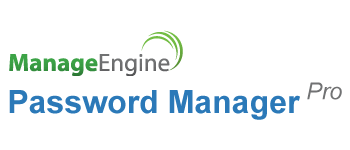Description

WhiteSource

Cyberint
Comprehensive Overview: WhiteSource vs Cyberint
WhiteSource
a) Primary Functions and Target Markets:
WhiteSource is primarily a software composition analysis (SCA) tool that helps organizations manage open-source components in their software development. Key functions include:
- Open Source Management: Identifies open-source components and assesses their security vulnerabilities, licenses, and quality.
- Security Compliance: Monitors and provides alerts for security vulnerabilities in real-time, offering remediation advice.
- License Compliance: Ensures that organizations adhere to open-source license requirements, thus avoiding legal pitfalls.
- DevSecOps Integration: Seamless integration with DevOps pipelines to automate security at every phase of software development.
Target Markets: WhiteSource primarily targets large enterprises and industries that heavily rely on open-source software. This includes sectors like financial services, healthcare, technology, and manufacturing.
b) Market Share and User Base:
The overall market presence of WhiteSource in the software composition analysis market is solid but competitive. It is well-regarded among enterprises for its comprehensive database and robust security features. While exact market share figures can fluctuate, WhiteSource is considered one of the leading SCA tools, often compared with other major players like Snyk and Black Duck.
c) Key Differentiating Factors:
- Database Coverage: High coverage of known vulnerabilities across languages and platforms due to a comprehensive database.
- Ease of Integration: Offers a wide range of integrations with popular CI/CD tools, which streamlines its adoption in DevOps practices.
- Real-Time Alerts and Remediation: Provides immediate alerts and detailed reports on vulnerabilities, along with guidance for remediation.
Cyberint
a) Primary Functions and Target Markets:
Cyberint is focused on digital risk protection and threat intelligence. Its main functionalities include:
- Threat Intelligence: Provides external threat insights to help organizations anticipate and mitigate potential cyber-attacks.
- Digital Risk Protection: Protects brand reputation by monitoring external digital environments for threats and vulnerabilities.
- Fraud Prevention: Identifies and manages potential online fraud risks, safeguarding digital assets.
- Attack Surface Management: Enables comprehensive visibility over exposed digital assets and helps in proactive risk mitigation.
Target Markets: Cyberint targets a wide range of industries, including financial services, retail, e-commerce, and any digital-centric businesses that require robust cybersecurity solutions.
b) Market Share and User Base:
Cyberint holds a notable position in digital risk protection and threat intelligence markets. While not as ubiquitous as some other cybersecurity giants, it has carved out a niche thanks to its specialized offerings in threat insights and digital asset protection. The user base typically includes businesses with advanced digital infrastructures looking for deep threat analysis.
c) Key Differentiating Factors:
- Focus on External Threats: Distinguished by its emphasis on understanding threats originating from outside the organization.
- Integration with Existing Security Frameworks: Complements existing cybersecurity measures rather than replacing them, thereby enhancing overall defense mechanisms.
- Customized Threat Intelligence: Tailors threat data and risk assessments to specific industry and organizational needs.
Comparative Analysis
-
Scope of Application:
- WhiteSource is more focused on software security related to open-source components, primarily within the development cycle.
- Cyberint provides a broader cybersecurity approach, focusing on external threat intelligence and digital risk protection.
-
Market Positioning:
- WhiteSource is a key player in the SCA market with strong integrations into DevSecOps workflows.
- Cyberint is recognized for its ability to offer specific, external cyber threat intelligence and provide solutions tailored towards protecting digital entities.
-
Integration and Usage:
- WhiteSource offers deep integration with software development tools, making it ideal for organizations that need to manage open-source use comprehensively.
- Cyberint serves organizations looking for an added layer of security intelligence, complementing internal security measures with rich external insights.
Both WhiteSource and Cyberint offer vital functions within their respective domains, serving complementary yet distinct needs in the realm of enterprise security and software management.
Contact Info

Year founded :
Not Available
Not Available
Not Available
Not Available
Not Available

Year founded :
2009
+972 3-728-6777
Not Available
Israel
http://www.linkedin.com/company/cyberint
Feature Similarity Breakdown: WhiteSource, Cyberint
WhiteSource (now known as Mend) and Cyberint are both cybersecurity-focused tools, but they cater to somewhat different aspects of the cybersecurity landscape. Below is a breakdown of their features based on potential similarities and differences:
a) Core Features in Common
While both tools have unique focuses—WhiteSource on open-source component management and security and Cyberint on threat intelligence and cybersecurity—their overlap in common core features is primarily around aspects of vulnerability management and security.
-
Vulnerability Assessment:
- Both tools provide mechanisms to identify and assess vulnerabilities. WhiteSource focuses on vulnerabilities in open-source libraries, while Cyberint can identify vulnerabilities in an organization’s broader threat landscape.
-
Real-time Alerts:
- They both offer real-time alerts related to security threats. WhiteSource alerts about vulnerabilities in open-source components, and Cyberint alerts about a wider range of cyber threats, from phishing to dark web threats.
-
Integration Capabilities:
- Both platforms offer integration capabilities with popular development and security tools, aiming to embed security within existing workflows.
-
Reporting and Dashboard:
- Both tools provide dashboards and reporting capabilities to help organizations visualize their security posture and manage vulnerability remediation efforts efficiently.
b) User Interface Comparison
- WhiteSource:
- Focuses on developers and development teams as end-users, and typically offers a UI that emphasizes integration into existing development workflows. Its interface tends to be centered around projects, dependencies, vulnerabilities, and remediation steps.
- Cyberint:
- Aimed more at cybersecurity professionals and focuses on the broader organizational threat landscape. The UI is typically designed to reflect various threat intelligence feeds, dashboards, and analytics, which are useful for SOC teams and security analysts.
The user interface comparisons can vary based on use case configuration, but generally, WhiteSource would have a more development-centric UI while Cyberint would be more suited for broader security operations analytics.
c) Unique Features
- WhiteSource (Mend) Unique Features:
- Open Source Component Management: Specializes in open-source software (OSS) license compliance, vulnerability detection in OSS components, and policy enforcement.
- Automated Remediation: WhiteSource offers automated fixes and pull requests to resolve vulnerabilities.
- Cyberint Unique Features:
- Cyber Threat Intelligence: Provides comprehensive threat intelligence that includes dark web monitoring, brand protection, and digital risk protection.
- Behavioral Analysis: Offers capabilities in detecting phishing campaigns, fraudulent activity, and data leakage directed at an organization.
- Threat Hunting and Incident Response: Supports proactive threat hunting and incident response capabilities tailored for SOC operations.
These unique features highlight their focus differences, with WhiteSource more tailored toward software developers and open-source security, while Cyberint offers broader cybersecurity solutions aimed at preventing and responding to external threats.
Features

Open Source Management
Security and Risk Management
Reporting and Analytics
Development Support

Threat Intelligence
Digital Risk Protection
Security Training
Incident Response
Vulnerability Management
Best Fit Use Cases: WhiteSource, Cyberint
WhiteSource and Cyberint are both reputable tools in the realm of cybersecurity and software management, each catering to specific needs and offering distinct benefits depending on the use case. Here's a breakdown of their optimal use scenarios and how they cater to different industries and company sizes:
WhiteSource
a) Best Fit Use Cases:
-
Open Source Management: WhiteSource is ideal for projects heavily utilizing open source components. It's effective in tracking, securing, and managing open source libraries within software projects.
-
Development Teams: Companies with large development teams that rely on various open source libraries for their software projects benefit greatly from WhiteSource's automated open source security and compliance offering.
-
Software Development Companies: Any business involved in software development—like SaaS providers, development agencies, or technology firms—can leverage WhiteSource for its robust vulnerability detection and license compliance checks.
-
Enterprises with DevOps Practices: Organizations practicing DevOps will find WhiteSource appealing due to its ability to integrate seamlessly into CI/CD pipelines, ensuring that open source security doesn't slow down development speed.
d) Industry Verticals and Company Sizes:
- Industry Verticals: Technology, finance, healthcare, e-commerce, and any other sectors using significant open source software components.
- Company Sizes: From medium-sized enterprises to large corporations with extensive development activities. Small businesses that depend on open source software may also find value if they require structured vulnerability management.
Cyberint
b) Preferred Use Scenarios:
-
Digital Risk Protection: Cyberint is an excellent choice for organizations seeking to protect their digital assets from external threats, such as data leaks, compromised accounts, and cyber-attacks.
-
Cyber Threat Intelligence: Companies needing comprehensive threat intelligence to anticipate, identify, and mitigate potential cyber threats will benefit significantly.
-
Retail & E-commerce Security: Cyberint's capabilities in monitoring for threats against online platforms make it ideal for retail and e-commerce companies looking to protect their online transactions and customer data.
-
Operational Security Teams: Organizations with dedicated security teams benefit from Cyberint’s tools designed to streamline threat detection and response.
d) Industry Verticals and Company Sizes:
- Industry Verticals: Retail, financial services, telecommunications, and any sector with a significant online presence or those subject to frequent cyber threat activity.
- Company Sizes: Cyberint targets medium to large enterprises, especially those with dedicated cybersecurity personnel or teams that need advanced threat protection and threat intelligence capabilities.
In summary, WhiteSource is best suited for organizations focusing on software development and the use of open source components, while Cyberint provides exceptional value for companies needing to manage external threats and protect digital assets, especially in industries with a heavy online presence. Both cater to different sectors and scales of operations, emphasizing their unique strengths in open source management and digital risk protection, respectively.
Pricing

Pricing Not Available

Pricing Not Available
Metrics History
Metrics History
Comparing teamSize across companies
Conclusion & Final Verdict: WhiteSource vs Cyberint
When evaluating WhiteSource and Cyberint, it’s important to consider the distinct strengths and weaknesses of each platform and the specific needs of your organization. Both tools serve different purposes within the cybersecurity landscape, and thus, the best choice depends on your particular requirements.
Conclusion and Final Verdict:
a) Which product offers the best overall value?
The best overall value largely depends on your organization's priorities. WhiteSource provides excellent value for organizations focusing on open-source security management and software composition analysis (SCA). It excels in identifying vulnerabilities in open-source components, providing automated workflows, and ensuring compliance with licensing requirements.
On the other hand, Cyberint is more suitable for organizations that require comprehensive external threat intelligence and monitoring. It offers robust solutions for digital risk protection, including threat intelligence, brand protection, and fraud prevention, thus providing value for companies heavily concerned with external threat landscapes.
b) Pros and Cons:
WhiteSource:
-
Pros:
- Comprehensive open-source security management.
- Continuous scanning and integration with CI/CD pipelines for real-time vulnerability assessment.
- Strong focus on compliance and license risk management.
- Automation features that save time and reduce manual effort.
-
Cons:
- Primarily focused on open-source components, which may not cover all security needs.
- May require integration efforts to fit into existing workflows and environments.
Cyberint:
- Pros:
- Extensive external threat intelligence capabilities.
- Real-time alerts and insights into global threat landscapes.
- Focus on digital risk protection and brand security.
- Scalable solutions for businesses of varying sizes.
- Cons:
- Can be more expensive, especially for smaller businesses.
- Might require training or expertise to fully utilize its capabilities.
- Somewhat limited in addressing internal security threats compared to external.
c) Recommendations:
-
For WhiteSource: Consider WhiteSource if your primary goals are to manage open-source components effectively and ensure compliance and security in your software development lifecycle. Companies with a heavy reliance on open-source software will find WhiteSource invaluable for mitigating risk associated with open-source vulnerabilities.
-
For Cyberint: Opt for Cyberint if your focus is on proactive defense against external threats and maintaining brand integrity and protection against digital risks. It is well-suited for organizations in sectors like finance, retail, or any industry where brand and customer security online are paramount.
Overall, when deciding between WhiteSource and Cyberint, evaluate your organization's specific security needs, budget constraints, and existing infrastructure. If possible, trial both solutions to see which integrates better with your processes and delivers on your unique security requirements.
Add to compare




